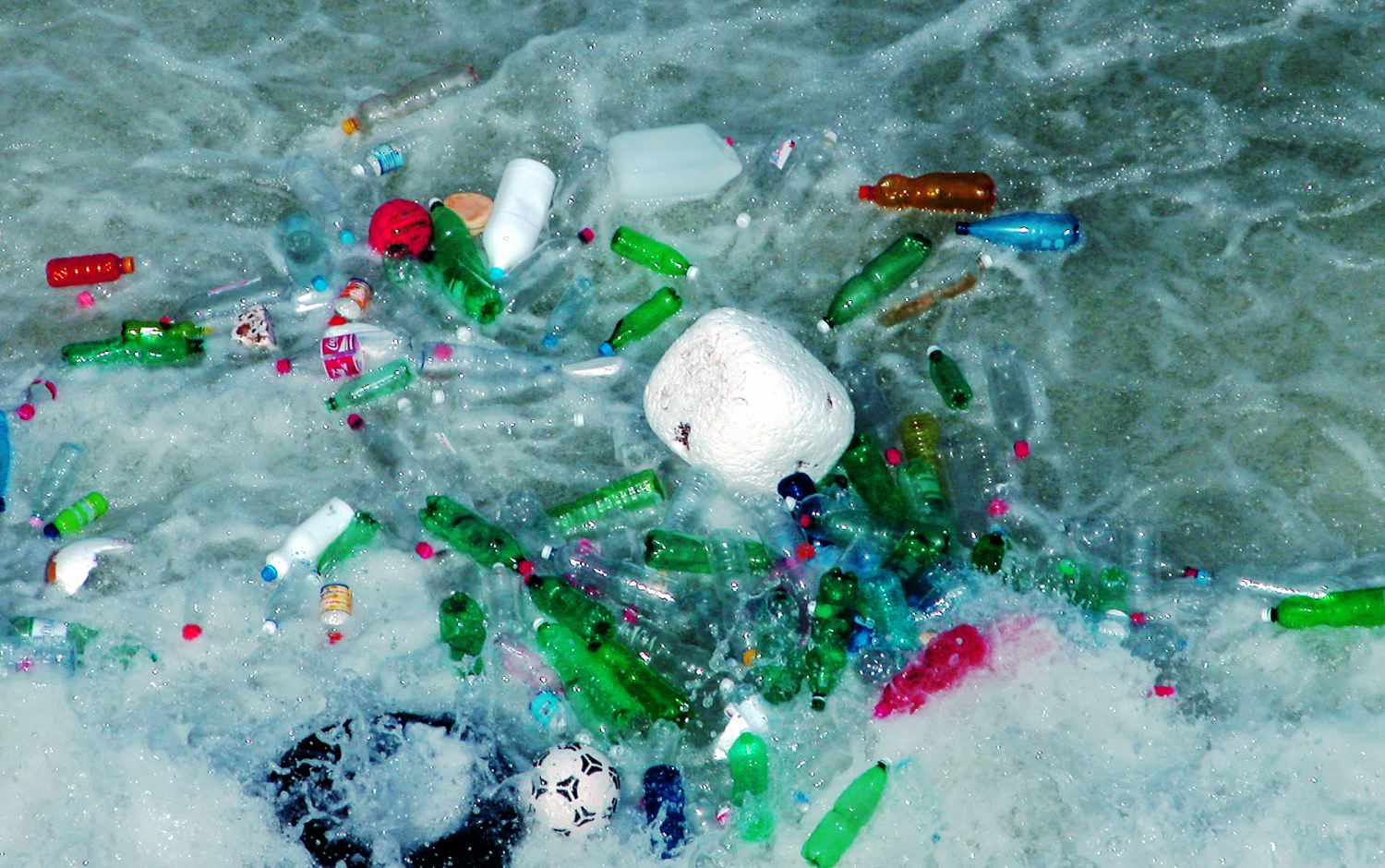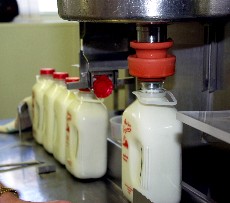Dr. Richard Thompson on how out-of-control plastics are damaging life in the sea
Listen Now Download the show by right-clicking the link.

This week, Dr. Caldicott continues her exploration of the “plastic plague” that is seriously harming ocean life and increasingly linked to numerous human health problems. Her guest Dr. Richard Thompson is a Senior Lecturer and Reader in Marine Ecology at the University of Plymouth in the UK. He is a leading scientist on the subject of persistent organic pollutants (POPs) binding to ocean plastic debris. His research, some of which he discusses in this interview, focuses on three main topics: the effects of plastic trash in the marine environment, the ecology and conservation of shallow-water habitats, and habitat modification to enhance biodiversity of marine engineering such as coastal defenses and off-shore renewable energy devices.
Dr. Caldicott asks Dr. Thompson to talk about what plastic debris in the oceans is doing to the marine food chain at the macro and micro level, and he starts off by pointing out the enormous increase in plastic production. He mentions the shocking fact that in the first nine or 10 years of the 21st Century (in other words, from 2000 through 2010), the world will have produced more plastic than in all of the 20th Century. And nearly all that new plastic will stay in existence for a very long time. In the oceans, he says, plastic items dating to World War II have been found perfectly intact.
As discussed in Dr. Caldicott’s recent interview with Captain Charles Moore, plastic particles of all sizes can harm sea organisms. The ocean plastic may disintegrate into smaller fragments, but it continues to be harmful to sea life, and does not disappear. Dr. Thompson’s laboratory has studied recovered plastic particles as small as half the diameter of a human hair in the seas and in the creatures that live there. Read more about
Dr. Thompson’s and Captain Moore’s pioneering research in the article, Polymers Are Forever: Alarming Tales Of A Most Prevalent And Problematic Substance, an excerpt from Alan Weisman’s book The World Without Us.
Dr. Caldicott asks Dr. Thompson to explain what she understands to be the five major categories of plastic, and he describes the different polymers.
Dr. Thompson argues that there are many societal benefits of plastic (in hospitals or schools, for example). He contends that how industry wastefully uses plastic to create packaging, and then fails to recycle most plastic, is the essential problem, not plastics themselves. Read Plastic. Fantastic? Can we learn to live with (and even love) plastic? Dr. Thompson says he believes the pace of industrialization and how goods are transported globally today would make it nearly impossible to eliminate plastic.

Penn. Dept. of Agriculture
Dr. Caldicott questions if plastic is really necessary. She asks if we should abandon plastic in favor of re-usable items like glass beverage bottles. Perhaps only 2% of plastics are recycled now, and recycled plastic is presently used for a limited number of products. Dr. Caldicott talks about the amount of electricity and fossil fuel that would be required to recycle more plastic (vs. making products that can be reused virtually forever). Many people are attempting to remove plastic from their lives, and they describe their experiences in blogs. Read the articles Get Plastic Out Of Your Diet (If Your Food Or Drink Is In Plastic, The Plastic Is In You) and Alternatives to Plastic.
Dr. Thompson says that industry must consider how all products impact the environment, “cradle to cradle.” The book entitled Cradle to Cradle, mentioned by Capt. Moore, advocates redesigning everything with sustainability in mind. Dr. Thompson provides one solution to the problem of excess packaging. He notes how the United Kingdom is now requiring all food products with salt to rate the amount of salt with red, amber or green dots. He says a color rating system should also be used to rate the amount of packaging – minimal to excessive, which would force manufacturers to reduce excess packaging. Up to 60% of plastic, according to some figures, is packaging that is discarded. Americans produce about 250 pounds of plastic garbage per person, per year. Both re-use and recycling can be very successful, as exemplified by Germany, where among other practices, consumers return packaging to stores and manufacturers must take it back and recycle it. Read more about Germany’s policies here and here.
One topic not addressed on this program, which would factor into the future of plastic, is peak oil. If petroleum is no longer available or severely restricted, the majority of plastic materials as we know them today would be impossible to produce. Listen to Dr. Caldicott’s interview with Richard Heinberg of the Post Carbon Institute on the topic of peak oil (and peak coal).
This episode also does not investigate bioplastics made from corn, soy, hemp, etc., and whether plant plastics are the correct solution to the plastic problem. Capt. Moore stated that plant plastics often do not biodegrade as advertised without being sent to special facilities which break them down. Plant plastics also play into the notion of disposability instead of re-use, and do not not alleviate the problem of people littering. Growing corn and other crops solely for plant plastic (or for biofuels) would displace land used for food production. While plant plastics would not have nearly the toxicity of oil-based plastic, they could still become debris that harms marine and land creatures. Read more about bioplastic in this Wikipedia article. Read about the bioplastic on the horizon in Biodegradable plastic made from plants, not oil, is emerging and A Turn to Alternative Chemicals and Coca-Cola Introduces Plant-Based Plastic Bottle [a bottle which is still 60-75% petroleum] and Scientists unveil plastic plants [genetically-engineered plants that actually “grow plastic”].
Dr. Caldicott moves the conversation with Dr. Thompson into the issue of toxicity of plastic, and the prevalence of the toxic chemical bisphenol-A (BPA) as discussed in her recent interview with Dr. Maricel Maffini. She refers to the recent Harvard University study that found that students who drank water out of plastic bottles had 70% more BPA in their urine than students in a control group who did not. Read Use of plastic bottles increases BPA in study. She mentions one of the highly toxic industrial corridors in New Jersey where plastic is made. Read about some of the pollutants released in the production of plastic in Plastic at your peril: The environmental and health costs of plastic.
Dr. Thompson talks about research studies finding minute particles of plastic in many consumer products like skin cleansers. If we are constantly flushing pieces of plastic into the water supply, he says, these microplastics are likely to harm many life forms. Do pets have plastic in them? Read about the findings of the Environmental Working Group’s study, Polluted Pets: High Levels of Toxic Industrial Chemicals Contaminate Cats And Dogs.
Dr. Thompson says the tiny plastic pre-production pellets or “nurdles” are becoming ubiquitous in the marine environment and in storm drains and rivers. He says that 95% of one seabird species has plastic in it. Nurdles now comprise 11 percent of beach litter.
Dr. Thompson discusses his findings about plastic on beaches throughout the world, and the increasing abundance of plastic fragments. One of Dr. Thompson’s studies showed that, in his words, “small plastic particles translocate to the circulatory system of the common mussel Mytilus edulis.” Read an abstract of Ingested Microscopic Plastic Translocates to the Circulatory System of the Mussel, Mytilus edulis (L.). Dr. Caldicott says she was fascinated to read how plastic particles can migrate throughout an organism, which she says could have major ramifications for animals and humans as plastic contaminants bio-concentrate in the food chain, and fish and other marine life become increasing polluted with plastic (and mercury, flame retardants, etc.).
Dr. Thompson explains how plastic polymers absorb carcinogenic and estrogenic mimickers from sea water, and which of these hydrophobic chemicals the plastic tends to absorb. He continues to study which chemicals are being absorbed, and which creatures are ingesting the most contaminated plastic. Dr. Thompson refers to the work of Dr. Hideshige Takada who is mapping the location of plastic pellets found worldwide, and which chemicals are binding to the nurdles. See more information on the International Pellet Watch website. Dr. Thompson says he is finding plastic particles everywhere in the world.
For more on Dr. Thompson’s research, read his 2004 article on microplastic, Lost at Sea – Where is All the Plastic? Read more on this study in Rising tide of micro-plastics plaguing the seas. Also read Potential for Plastics to Transport Hydrophobic Contaminants, another study by
Dr. Thompson.
For further information on this week’s topic, have a look at the following articles: Why Small Plastic Particles May Pose a Big Problem in the Oceans and Oceans Awash With Microscopic Plastic, Scientists Say and Warning on plastic’s toxic threat and Plastics ‘poisoning world’s seas’ and How to Help Prevent Birds and Sea Life from Dying. Learn about the new 85-minute documentary film, Addicted to Plastic : The Rise and Demise of a Modern Miracle, and watch the two-minute trailer here. And visit the website of Plastic Debris-Rivers to Sea, a project of Capt. Moore’s Algalita Marine Research Foundation and the California Coastal Commission.
This week’s interview with Dr. Richard Thompson is a vital use of your time to learn even more about the multifaceted problem of plastic.
